Karl Pavlovich Bryullov
Paintings
Italian Noon. Italian Midday
The Last Day of Pompeii
Bathsheba

Portrait of Princess Elezabeta Pavlovna Saltykova


Princess Yuliya Pavlovna Samoilova Leaving a Ball with Adopted Daughter Amacilia Pacini
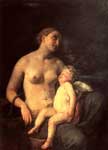
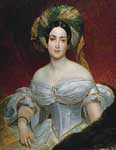
Portrait Aurora Demidova , Karamzina
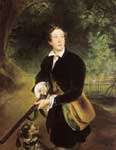
Portrait of Aleksey Konstantinovich Tolstoy
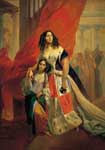
Portrait of Countess Yulia Samoilova
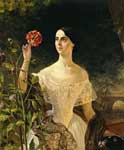



Dream of a young girl before dawn.








Confession of an Italian Woman

Italian Woman with a Child by a Window

Italian Woman Lightning a Lamp in front of the Image of Madonna

Italian, Expecting a Child, Looking at His Shirt, Her Husband Cobble Together a Cradle

Mother Awoken by Her Crying Child

Nuns Convent of the Sacred Heart in Rom

In a Harem. "By Allah's Order Underwear Should Be Changed Once a Year"

Pilgrims at the Entrance of the Lateran Basilica


Sweet Waters Near Constantinople


Scene at the Entrance of a Cathedral



Dreams of Grandmother and Granddaughter

Siege of Pskov by Polish King Stefan Batory in 1581

Siege of Pskov by Polish King Stefan Batory in 1581


















Village of San Rocco near the Town of Corfu



Temple of Apollo Epikourios in Figalia

















Portrait of Countess Samoilova with (Giovanina) Amacilia Pacini and black boy

Portrait of Giuseppina Ronzi de Begnis (1800-1853), Italian soprano

Portrait of Anna Lopuhina (1786-1869)

Portrait of Grand Duchess Maria Nikolaievna (1819-1876). Study.


Portrait of Aurora Karamzina (née Stjernvall)

Portrait of the Shishmareva Sisters


Portrait of Maria Pavlovna Volkonskaia (1816-1854)



Portrait of Sophia Shuvalova Bobrinskaya

Countess Sophia Bobrinskaya, Shuvalova . The wife of Count Alexander A. Bobrinsky


Alexander Alekseevna Schwartz, Tomilova (1815-1878)

Portrait of Platon Vasilyevich Kukolnik

Portrait of the Artist Prince G. G. Gagarin

Portrait of Feodor Ivanovich Pryanishnikov



Portrait of George Klejberga


Portrait of the Military and His Servant

Portrait of Duke Maximilian Joseph Eugene Auguste Napoleon of Leuchtenberg (1817-1852)


Portrait of the Architect K. A. Ton

Portrait of the artist J. F. Yanenko in armor





Portrait of Ippolit Antonovich Monighetti


Portrait of the Secretary of State Piotr Kikin

Portrait of the Actor A.N.Ramazanov

Portrait of the Musician M. Vielgorsky



Portrait of General-Adjutant Count Vasily Alekseevich Perovsky


Portrait of Count Alexy Perovsky


Portrait of the Writer A. N. Strugovshchikov

Portrait of Aleksey Konstantinovich Tolstoy




Portrait of Maria Kikina as a Child




Fine Art Prints | Greeting Cards | Phone Cases | Lifestyle | Face Masks | Men's , Women' Apparel | Home Decor | jigsaw puzzles | Notebooks | Tapestries | ...
Karl Pavlovich Bryullov (Russian: Карл Па́влович Брюлло́в; 12 December 1799 – 11 June 1852), also transliterated Briullov or Briuloff and referred to by his friends as "The Great Karl", was a Russian painter. He is regarded as a key figure in transition from the Russian neoclassicism to romanticism. Karl Bryullov was born on December, 12th (23), 1799 in St. Petersburg,[1] in a family of the academician, the woodcarver and engraver Pavel Ivanovich Briullo (Brulleau, 1760—1833). He felt drawn to Italy from his early years. Despite his education at the Imperial Academy of Arts (1809–1821), Bryullov never fully embraced the classical style taught by his mentors and promoted by his brother, Alexander Bryullov. After distinguishing himself as a promising and imaginative student and finishing his education, he left Russia for Rome where he worked until 1835 as a portraitist and genre painter, though his fame as an artist came when he began doing historical painting.

Karl Bryullov by F.Zavialov
His best-known work, The Last Day of Pompeii (1830–1833), is a vast composition compared by Pushkin and Gogol to the best works of Rubens and Van Dyck. It created a sensation in Italy and established Bryullov as one of the finest European painters of his day. After completing this work, he triumphantly returned to the Russian capital, where he made many friends among the aristocracy and intellectual elite and obtained a high post in the Imperial Academy of Arts.
An anecdote concerning Bryullov appeared in Leo Tolstoy's essay "Why Do Men Stupefy Themselves?" and later in the same author's essay "What Is Art?".
While teaching at the academy (1836–1848) he developed a portrait style which combined a neoclassical simplicity with a romantic tendency that fused well, and his penchant for realism was satisfied with an intriguing level of psychological penetration. While he was working on the plafond of St Isaac's Cathedral, his health suddenly deteriorated. Following advice of his doctors, Bryullov left Russia for Madeira in 1849 and spent the last three years of his life in Italy. He died in the village of Manziana near Rome and is buried at the Cimitero del Testaccio there.
References
"Karl Pavlovich Bryullov (Russian artist) - Encyclopedia Britannica". Britannica.com. Retrieved 2014-02-03.
----
Fine Art Prints | Greeting Cards | Phone Cases | Lifestyle | Face Masks | Men's , Women' Apparel | Home Decor | jigsaw puzzles | Notebooks | Tapestries | ...
----
Artist
A - B - C - D - E - F - G - H - I - J - K - L - M -
N - O - P - Q - R - S - T - U - V - W - X - Y - Z
Retrieved from "http://en.wikipedia.org/"
All text is available under the terms of the GNU Free Documentation License





